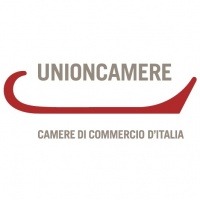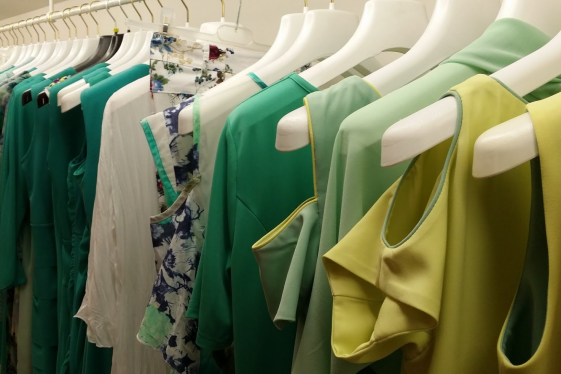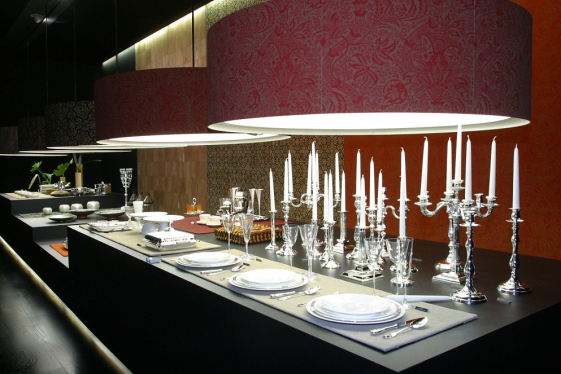
Unioncamere
Unioncamere - the Union of Italian Chambers of Commerce, Industry, Handicraft and Agriculture - is the public association that institutionally collects and represents the Italian chamber system. www.unioncamere.it
Italian handcrafts: Verona Textiles
We are in the 1950s, the years after the Second World War, in Sandra, a village near Lake Garda in the province of Verona, it was here that the history of fashion in Verona began. A history marked by the work of small craft tailors craft that with the commitment, the sacrifices and the support of a network of small family businesses became an indus...
Italian handcrafts: Empoli Glass
Glass production, though already present in Empoli in the fifteenth century, experienced a significant boost in the second half of the eighteenth century, when Domenico Lorenzo Levantini began producing majolica and glass near Porta Pisana.
Italian handcrafts: Silver Padua
In Padua in the late Medieval period the presence of the Basilica of S. Antonio stimulated the development of a school of artisan silversmiths of unparalleled skill, capable of producing masterpieces such as the reliquary that contains Saint Anthony’s chin: a splendid specimen made from molten silver that has been embossed, chased, perforated and g...
Italian handcrafts: Este Ceramics
Este can be considered one of the most famous pottery towns. Este pottery has been present throughout the centuries, from prehistoric times down to the present day. Like all ancient peoples, the first inhabitants on the banks of the Athesis (the River Adige, which once passed through Este) certainly used clay and created the first rudimentary objec...
Italian handcrafts: Romagna Fabrics
Historically viewed as a craft of the poor, tied essentially to the tools of peasant art, hand printed Romagna fabrics have an uncertain date of birth. As the oldest documents do not go further back than the first decades of the 19th century, it is assumed that Romagna hand printed fabrics were being made before that.
Italian handcrafts: Goldsmithery in Valenza
The history of goldsmithery in Valenza began in 1817, when Francesco Caramora, a goldsmith working in Pavia, moved to the city and opened a shop in Contrada Maestra. In the space of a decade, his business flourished and he taught the local craftsmen the techniques and practices of the goldsmith’s craft. Between 1827 and 1860, more shops opened belo...
Italian handcrafts: The Straw Hats of Signa
The weaving of plant fibres is one of humanity’s most ancient activities, and takes inspiration from nature and has been used over time to create a wide variety of containers and hats that protect against the sun’s glare. In Signa in 1714, Domenico Michelacci, known as Bolognino, began to cultivate 'grano marzuolo', a variety of wheat with small ea...
Italian handcrafts: The Textiles of Longobucco
The origins of weaving in Longobucco are ancient and common to other areas of Calabria. It is said that inhabitants of the coasts of Calabria were taken as prisoners in raids by Turkish pirates. After a long period spent in the countries of the east, some women managed to return to their places of origin and brought with them the art of weaving, an...
Italian handcrafts: The Wood of Cuneo
The greatest concentration of wood companies in the province of Cuneo is located in Valle Varaita, a valley that is home to around 90 firms actively producing furniture and fixtures, as well as toys and musical instruments. Furniture manufacturing, which was strengthened between the 1950s and 1970s with the rustic “Valle Varaita” style, experienced...
Italian handcrafts: Grottaglie Ceramics
For centuries, Grottaglie, a small town in the province of Taranto, has been the site of flourishing artisanal ceramic production closely linked to the richness of the clay typical of this region. Up until the last century, it was possible to find dozens of ceramic objects in every home in Grottaglie. These were “ceramics for use”, completely unrel...
Italian handcrafts: The Hats of Montappone
The traditional activity of the hat district is concentrated around the Marche region and more specifically in the towns of Montappone and Massa Fermana.It began in 1300 when hats were used exclusively for farming activities. Grain harvesting produced straw, which was then braided to be used as a raw material for making “straw hats”.













